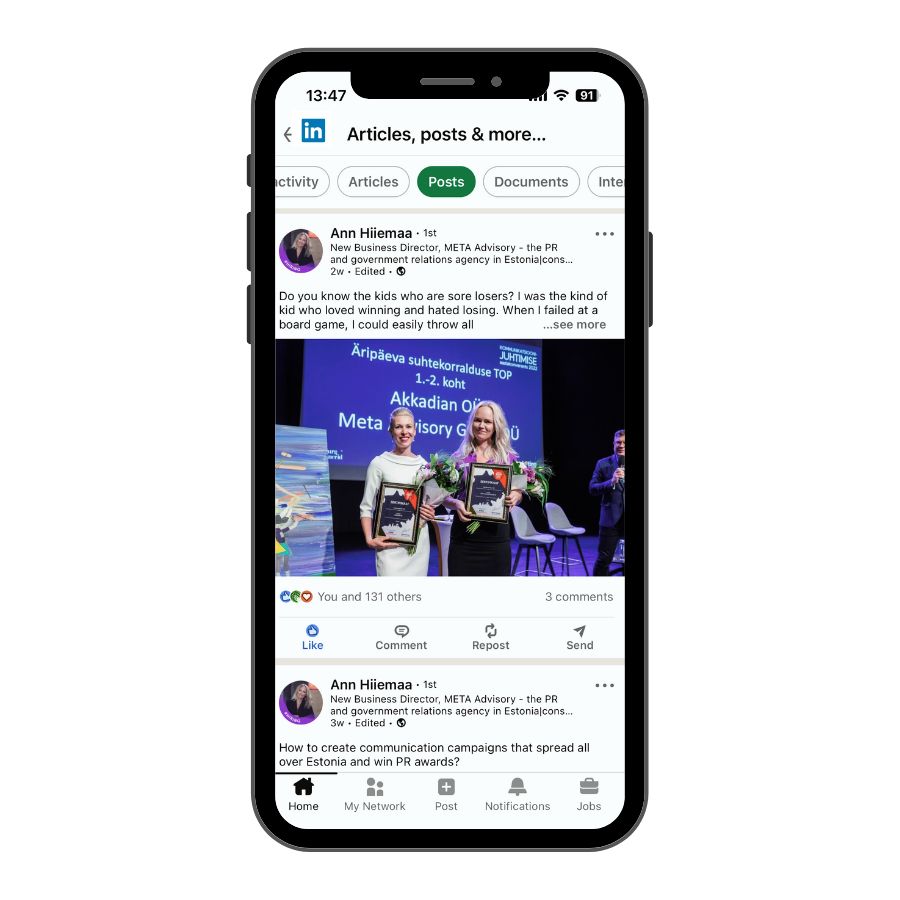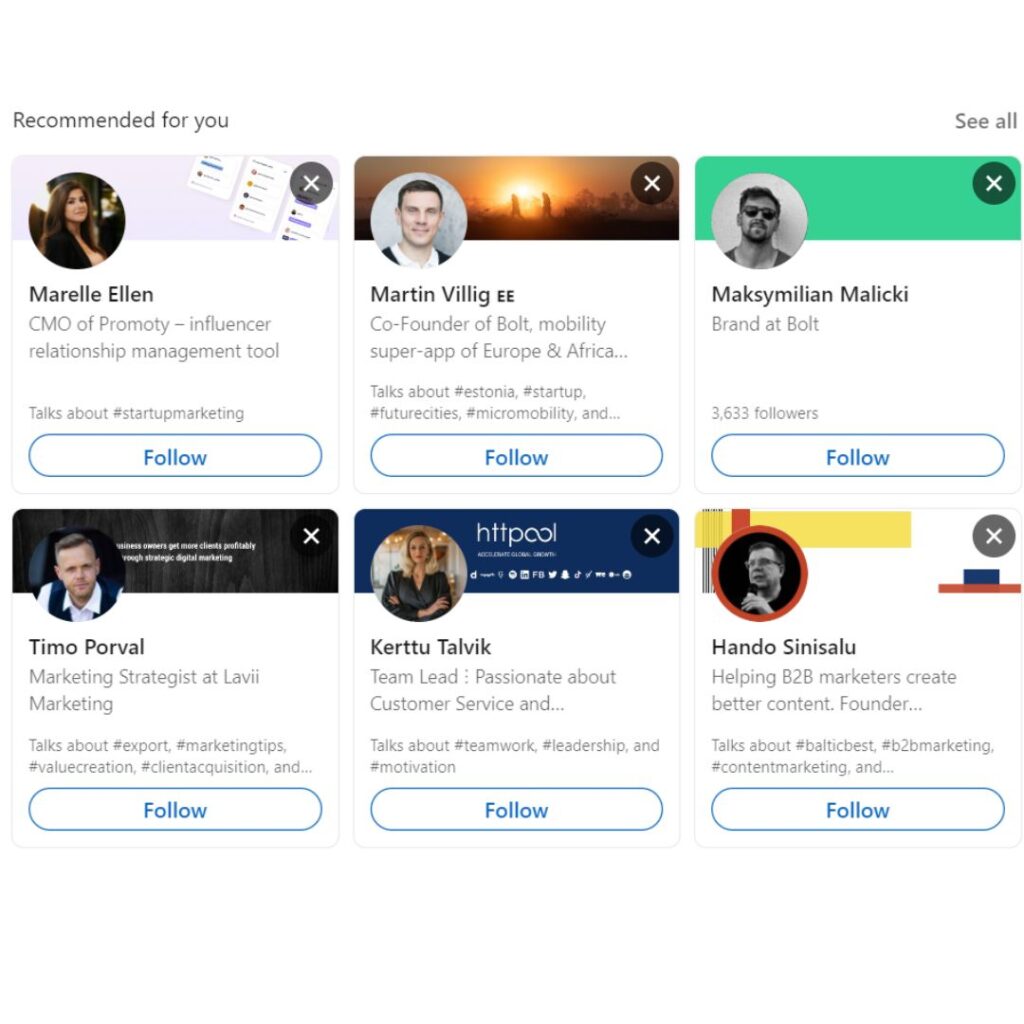5 most common mistakes people make on LinkedIn
LinkedIn has long been a well-known platform for recruiters and job seekers. Still, in recent years, the platform has gained popularity among business people looking to build their credibility, develop a personal brand and share ideas about their work field. However, the growing amount of content also brings typical mistakes into sharper focus. What are the most common mistakes on LinkedIn content creation, and how to avoid them?
Companies encourage employees to share company news on personal LinkedIn accounts to build employee advocacy. This is a justified tactic, as employees’ posts attract eight times more views and engagement on the platform than corporate (i.e. official company account) posts.
Unfortunately, many organizations have not yet taken the opportunity to create brand ambassadors on LinkedIn or given their employees the knowledge and resources to make the most out of their profiles. However, poorly thought-out content is created without understanding the basics of the platform. The mistakes can lead an individual or company further from their ultimate goal and reduce users’ trust.
5 MISTAKES TO AVOID:

1. Not setting a goal
LinkedIn is used for various purposes: finding investors, expanding social networks, building a personal brand, staying up to date with industry news, and finding work partners. It is easier for ambassadors to get the most out of the platform if their aim is precise and they know where they are going with their profile. Take time to think about why you chose to create an account and how to support your career building.
2. Targeting the wrong audience
Targeting is the basis of almost all marketing activities. We need to know our audience to create hard-hitting messages that will help address the pain points of our intended audience. LinkedIn allows us to get as specific as possible with our target audience, explore different profiles and identify the issues that people in a particular field or sector might have. Defining the audience is also essential for expanding your list of connections – if the goal is to find investors, there’s no need to add engineers who are unlikely to be interested in the content you share.
3. Unfinished profile
On LinkedIn, it is possible to distinguish between passive and proactive content. While proactive content refers to posts one creates on a profile, passive content can be defined as all the information on a user’s profile relevant to the target audience – from the cover photo to work experience. For many, a profile is the equivalent of a CV, but this is not quite the case.

A profile allows everyone to tell their story and speak to their target audience without being too pushy or sending private messages. The critical elements of a profile are the headline and about sections, which describe to the target audience exactly how the profile owner helps them, gets results for them, and what are the person’s principles and processes.
4. Lack of a supporting message in posts
Anyone, who has spent a bit of time on LinkedIn, has probably come across posts that seem too vague or lacking in content. While many LinkedIn marketers recommend focusing on quantity, or the abundance of posts, to increase visibility, this can also harm a profile owner, as such content can become tedious and superficial for followers.
If you aim to build a strong personal brand, take time to create meaningful posts, check out the trends in your field, and plan your steps well in advance. It can also be worthwhile for beginners to show their first posts to friends or colleagues – take their honest feedback into account and make the necessary changes before publishing the post.
5. “Connect” vs “Follow” button
One of the latest trends on LinkedIn is converting a regular user-type account into a content creator-type profile. This means that the “Connect” button on a person’s account becomes a “Follow” button instead. It makes sense for content creators with a broader audience to switch from “Connect” to “Follow” to avoid drowning in a sea of friend requests. However, accounts with a smaller following should seriously consider this decision before using the button. On LinkedIn, the connect button lets both parties keep up to date with each other’s news and activities, thus expanding their social circle.


